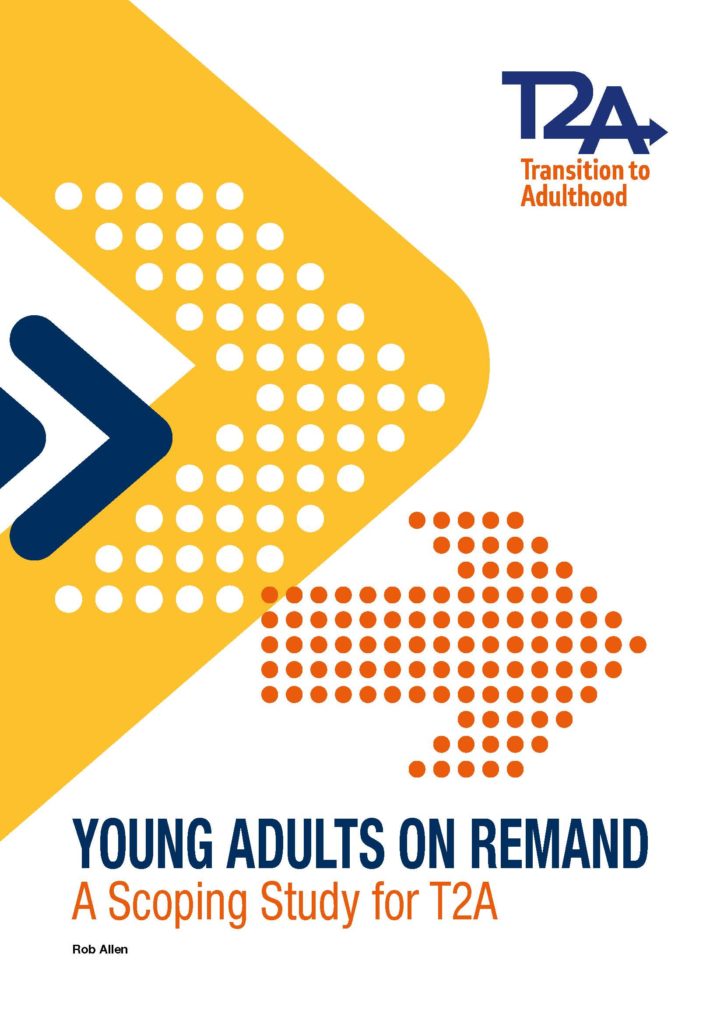
A new T2A (Transition to Adulthood) briefing on young adults and remand launched today makes the case for a reform of remand arrangements for the young adults.
A substantial and growing evidence base has found that young adults aged 18-25 are a distinct group, because they are still maturing. Interrupting a young adult’s development with a period in custody should only be made as a last resort.
The T2A report comes hot on the heels of the Chief Inspectorate of Prison’s short thematic review ‘Outcomes for Young Adults in Custody’, which was highly critical of the Government placing young adults in adult prisons without any coherent strategy, despite a decade of research and evidence explaining the uniqueness of the needs of young adults.
Specific data is not available about the extent to which young adults remanded to custody subsequently receive a custodial sentence but in the case of children under 18 and women of all ages, most do not.
Although there has been a decline in the numbers of young adults remanded in custody, the report argues there is scope for reducing them yet further.
Recent research by Ed Cape and Tom Smith found that “nearly half of those people who are kept in custody at some stage before their trial or sentence were either found not guilty, or if found guilty, were given a non-custodial sentence”.
In the context of a growing court backlog and highly restricted regimes in prisons because of the COVID-19 pandemic, the report’s author, Rob Allen, argues “it is particularly timely to consider the case for reform of remand arrangements”. ‘Extended Custody Time Limits’ introduced in September 2020 to manage court delays, threaten to leave thousands of people on remand in custody for longer than usual. Young adults are spending longer in custody as a result of these court backlogs which were already problematic prior to the pandemic.
The recognition of the need for a distinct approach to young adults has already led to a number of important criminal justice reforms such as expanded explanations in Sentencing Guidelines about how age and immaturity can affect both a young adult’s responsibility for an offence and how a particular sentence may impact on them. However, there has been no corresponding reform for young adults on custodial remand who, the report says: “can be deprived of their liberty for many months, often experiencing very impoverished regimes and … placed at risk of violence and self-harm”.
The briefing examines to what extent the specific developmental needs of young adults are taken into account by courts when making decisions about whether to remand defendants into custody. It also looks at the existing legal provisions which could be applied at the remand stage of criminal proceedings, and whether criminal justice agencies and courts think about the maturity of young adult defendants when making decisions about remanding them.
If young adults aren’t remanded in custody the report looks at what alternatives are available, particularly young women, and defendants with mental health problems.
Finally it looks at what measures might be taken to improve the distinctiveness of remand arrangements for 18-25 year olds? Read ‘Young Adults on Remand’.
New report calls on Sentencing Council to develop formal sentencing principles for young adults
News and eventsThe Sentencing Council should work towards developing formal sentencing principles for young adults, similar to the principles that are in place for children, says a report published by the Howard League for Penal Reform and T2A.
The report, Judging Maturity: Exploring the role of maturity in the sentencing of young adults analysed 174 court judgments in cases involving young adults, focusing on how judges considered the concept of maturity. The findings suggest that the age and maturity of young adult defendants are not sufficiently considered by the courts at present. However, the research also shows that where a young adult’s immaturity is raised by court professionals, the courts are well placed to factor it in to achieve better outcomes – and more likely to do so if sentencing guidance encourages it.
There is substantial evidence that young adults – aged 18 to 25 – should be treated as a distinct group from older adults, largely because they are still maturing – neuroscience research has proven that brain development continues well into the mid-20s. Reaching adulthood is a process, not an event, and the key markers of adulthood, such as independent living, employment and establishing relationships, happen at different times for different young people.
Young adults are more likely to be caught up in the criminal justice system than older adults. They face significant difficulties coping in prison, where both the suicide rate and violence rates are higher among their age group than among the prison population as a whole, and they have higher reconviction rates following release than older adults. Between 2006 and 2016, 164 people aged 18 to 24 died in custody, including 136 who died by suicide.
While there is a wealth of guidance and case law concerning the sentencing of children, there is no set of principles to ensure that judges take a tailored approach to sentencing young adults. Tens of thousands of young adults who appear before the courts for sentencing each year could benefit from a distinct approach.
